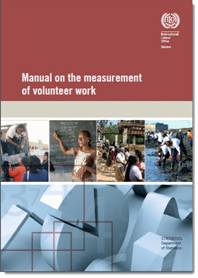From An Organizational Issue to a Community Issue: Shifting Volunteer Management
In 2009, Jeffrey L. Brudney and Lucas C.P.M. Meijs proposed a new way of thinking about volunteer resources: as a natural resource which must be managed sustainably or it will be exhausted. In their article, "It Ain’t Natural: Toward a New (Natural) Resource Conceptualization for Volunteer Management" (published in Nonprofit and Voluntary Sector Quarterly, Volume 38, Issue 4, and reviewed in e-Volunteerism by Steven Howlett), the authors argued that volunteer energy should be viewed as a human-made, renewable resource that people can grown, recycle and influence positively as well as negatively.

 There has been quite a bit of research on volunteer satisfaction, but not so much on volunteer manager satisfaction. How satisfied are volunteer managers with their jobs? Do their working conditions differ from those of managers of paid staff? What are the implications for nonprofit organizations and human resources departments? In this issue, reviewer Laurie Mook looks at a study of 314 volunteer managers, conducted by a group of Canadian researchers who analyzed job-related and organizational factors such as co-worker respect, supervisor support, closeness to volunteers, and the nature of the work as an expression of personal values. Their final model, Mook explains, predicted job satisfaction for both short-term and long-term volunteer managers.
There has been quite a bit of research on volunteer satisfaction, but not so much on volunteer manager satisfaction. How satisfied are volunteer managers with their jobs? Do their working conditions differ from those of managers of paid staff? What are the implications for nonprofit organizations and human resources departments? In this issue, reviewer Laurie Mook looks at a study of 314 volunteer managers, conducted by a group of Canadian researchers who analyzed job-related and organizational factors such as co-worker respect, supervisor support, closeness to volunteers, and the nature of the work as an expression of personal values. Their final model, Mook explains, predicted job satisfaction for both short-term and long-term volunteer managers.  We hear over and over again how volunteers are indispensable to many organizations. While we have previously covered articles on different methods used to estimate a value for volunteer contributions, a new study out of New Zealand looks at how volunteer value is communicated, both internally and externally. In this issue, reviewer Laurie Mook examines how a team of researchers conducted a qualitative study of local and national medium-sized health charities, and provides some thought-provoking insights into the barriers and drivers to communicating volunteer value for these organizations. An interesting aspect of the study, Mook explains, is that the researchers interviewed the executive director, fundraising manager and manager of volunteers from each organization, providing for a more holistic look at how volunteer value is communicated. Mook also provides her insights into the practical implications of the study, encouraging readers to reflect on the implications of making volunteer contributions visible while also considering the impact of keeping them invisible.
We hear over and over again how volunteers are indispensable to many organizations. While we have previously covered articles on different methods used to estimate a value for volunteer contributions, a new study out of New Zealand looks at how volunteer value is communicated, both internally and externally. In this issue, reviewer Laurie Mook examines how a team of researchers conducted a qualitative study of local and national medium-sized health charities, and provides some thought-provoking insights into the barriers and drivers to communicating volunteer value for these organizations. An interesting aspect of the study, Mook explains, is that the researchers interviewed the executive director, fundraising manager and manager of volunteers from each organization, providing for a more holistic look at how volunteer value is communicated. Mook also provides her insights into the practical implications of the study, encouraging readers to reflect on the implications of making volunteer contributions visible while also considering the impact of keeping them invisible. This issue’s Research to Practice provides great food for thought on organizational factors affecting volunteer management. For example, how do the goals of the organization, area of activity, or degree of bureaucracy impact the role that a volunteer management program can take in the strategic achievement of an organization’s mission? How can organizational settings be “assessed and aligned to the needs of volunteers, but also to those of the organization and society at large?”
This issue’s Research to Practice provides great food for thought on organizational factors affecting volunteer management. For example, how do the goals of the organization, area of activity, or degree of bureaucracy impact the role that a volunteer management program can take in the strategic achievement of an organization’s mission? How can organizational settings be “assessed and aligned to the needs of volunteers, but also to those of the organization and society at large?” In
In 